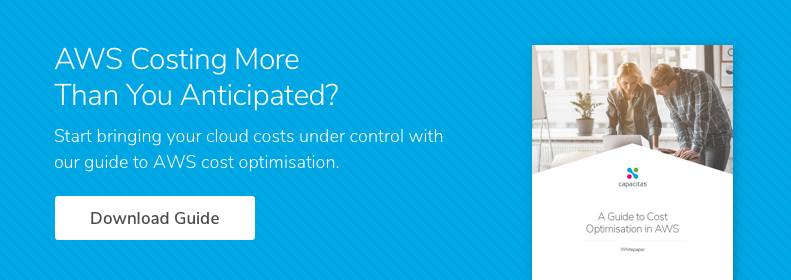Estimated read time: 4 Minutes
You've spent lots of time getting cloud costs under control
You moved to the cloud. Costs were higher than expected. You reached for the normal cost saving tactics: Negotiation, turning off idle instances, rightsizing...
The teams have done all the easy stuff, what about the rest?
Engineers are clever people and have proficiently reduced idle instances, rightsized, etc... Why are they not getting the costs lower? It’s not that simple. The high cloud costs are symptoms of deep underlying problems that you need to look at with a new perspective.
There are underlying problems not being addressed
They are tough to see and even tougher to solve because no individual or team is responsible. How many of the following high cost problems do you recognise?
- Lift and shift performance strategy is not aligned with the cloud
- Complex architecture is not optimised for performance
- Lack of Team skills and confidence
- Early warning signs are missed by the business
1. Lift and shift performance strategy is not aligned with the cloud
Do you find that teams spend lots of effort on performance, but the value appears to be minimal? At the same time, your teams spend lots of time keeping a lid on costs.
If you recognise any of the above symptoms, it’s probably because not only did you lift and shift the architecture, but you also lifted and shifted performance strategy. It works but it's not delivering the value you need in the cloud. It has a limited range of criteria for success, e.g. Is it fast enough?
2. Complex architecture is not optimised for performance
Do you find that the production systems have ongoing stability issues? It feels like every time the team makes a change there is a service incident.
If this seems familiar, then it’s because you have a complex end-to-end cloud architecture. No-one knows the end-to-end flows or their consumption as they pass through.
3. Lack of team skills and confidence
Do you find teams are reluctant to make changes in production? Do new features/changes take forever to get from design to production? You thought the whole point of the cloud was to deliver more speed and agility.
The reason is teams don’t have a deep enough understanding of the resource usage and performance of their systems. They look only at a small range of metrics most of which ignore resource consumption. These monitoring gaps are only filled in a piecemeal fashion after incidents occur.
4. Early warning signs are missed by the business
Do you find that when things go wrong teams blaming each other or the cloud vendor?
The reason is that there are gaps in ownership and accountability. Teams will be focused on their own services. As long as their part is fine, everyone else’s doesn’t matter.
Your cloud strategy needs to incorporate these 4 best practices:
- The strategy needs to broaden the success criteria to cover all 7 pillars of cloud performance
- Understand end-to-end cost per unit to identify inefficiencies
- Use a standard model of key metrics and how they should behave that can be applied to any system
- Have a single owner who can take in these best practices and make the right investment decisions
You are probably thinking all of the above is hard, why bother? Well, these problems will manifest in other symptoms such as instability, increasing time keeping show on the road, increased effort on controlling costs and performance.
These problems may not be causing you pain now but the longer you leave them the harder they will get to solve.
Schedule a Cloud Opportunity and Risk Assessment Call
View Free, Relevant Capacitas Insights
Whether you’re looking to optimise costs, improve agility or drive value creation, our expert insights can help you. Ready to start?

